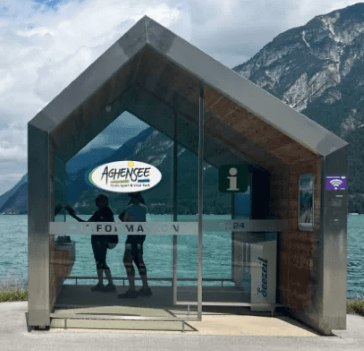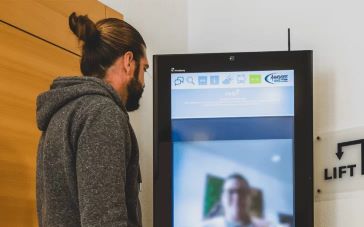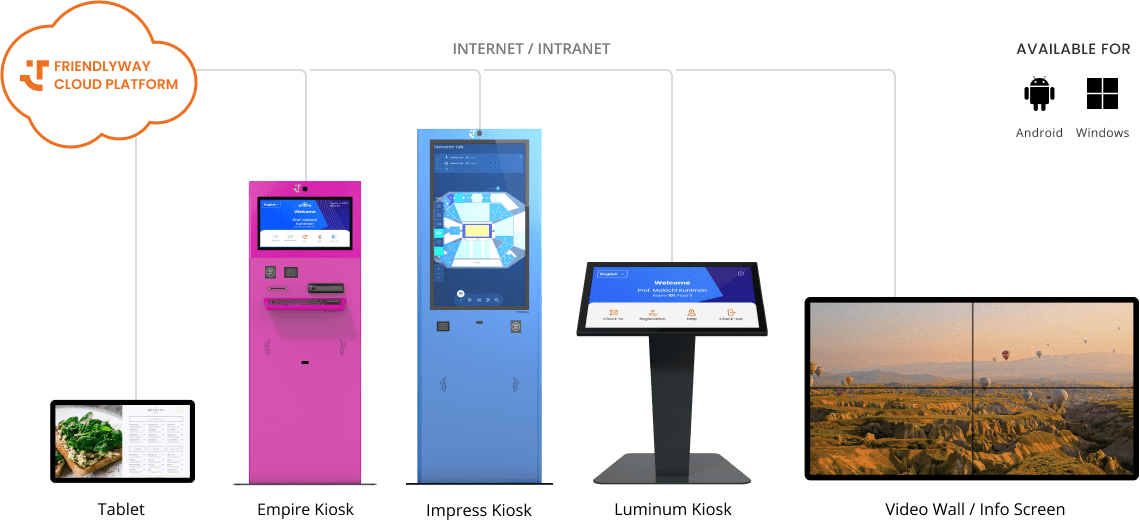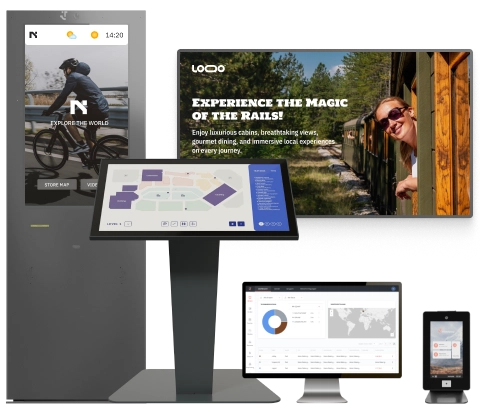
After years of an unprecedented downturn caused by the global pandemic, the travel industry seems to be approaching full recovery. In its recent press release, the World Tourism Organization (UNWTO) reports that international tourist arrivals between January and July 2023 reached 84% of pre-pandemic levels (compared to 2019) globally, with Europe already at 91%.
In the EU, the world’s most popular destination region, each month brings a new record of nights spent in short-stay accommodations booked via online platforms, such as Airbnb and Booking.com. Similarly, Ryanair, Europe’s largest airline, is posting record numbers of passengers, with August 2023 being its busiest month ever.
Only one in five experts on the panel surveyed by UNWTO expects the complete return of international tourism to 2019 levels in their country to occur later than 2024. The reopening of Asian markets, especially China, will likely continue boosting travel in all parts of the world.
Anticipating the strongest year ever for the tourism sector in 2024, companies should prepare for an influx of visitors and everything that comes with it, including rising demand for customer support, travel information, and booking. Several challenges might complicate this process, though.
Current Challenges in Travel and Tourism
The continuing difficulties the tourism industry faces are becoming even more relevant amid the global geopolitical and financial instability we experience today.
Staff shortages
Many travel businesses had to lay off their employees during the pandemic. The World Travel & Tourism Council (WTTC) states that the sector lost more than 70 million jobs worldwide in 2020. While employment has partly recovered since then, small and medium travel companies, most affected by staff loss, still find it hard to replenish their diminished workforce, especially in customer-facing roles.
Inflation
Ongoing inflation and rising energy prices further aggravate staff shortages. More costly operations force travel companies to cut down on expenses dramatically, which means they must provide the same services with smaller teams and lower budgets. At the same time, inflation alters tourists’ spending habits, driving them to seek higher value for their money and opt for shorter, more local trips.
Sustainable travel
With a growing awareness of humans’ contribution to the climate crisis, consumer demand for eco-friendly travel and accommodation options is surging. In Booking.com’s latest annual survey, 76% of global respondents said they want to travel more sustainably in the upcoming year, 5% more than in 2022.
Digitalization
The development of digital technology in tourism is affecting how people travel and, therefore, is becoming increasingly important for success in the industry. Traditional travel and hospitality businesses should embrace technological innovations to compete with emerging digital-native companies and attract customers.
Overcoming Tourism Industry Challenges with Digital Signage
Digital signage, which displays dynamic or static multimedia content like images, videos, and text on digital screens, must become essential in any destination’s strategy to engage visitors and create positive experiences.
friendlyway, a leading German provider of digital signage solutions, has recently shared how this innovative technology addresses the tourism sector’s challenges in a market development program supported by the German Chambers of Commerce Abroad.
For example, digital signage drives sustainable travel by reducing paper use and enabling online updates. At friendlyway, we design our customized solutions to assist businesses in navigating the shift toward a more sustainable and digitized tourism industry.
Applications of Digital Signage in Tourism
While the travel and tourism industry has been familiar with digital signage since the 2000s, the technology has only recently advanced to provide the interactive experience expected by today’s sophisticated travelers and has become sufficiently cost-effective.
The application areas where it has proven most valuable include advertising and promotion, wayfinding and navigation, visitor information and entertainment, self-service, and remote support.
Advertising local brands

Companies in the tourism sector can use modern digital kiosks, displays, and digital billboards to deliver ads in real-time, which allows them to promote various local businesses efficiently and effectively, including:
- Advertising events and tourist attractions
- Promoting local restaurants and hotels
- Displaying discounts and special offers
As a tourism-based business, you can strengthen your brand and engage visitors through compelling visual content. Furthermore, a digital signage network provides a platform you can offer to third parties to advertise their services and goods to tourists for mutual benefit.

Digital signage has long been used in recreation centers, airports, hotels, museums, and other places to help tourists explore the area and receive helpful information. It can include dynamic destination maps and point out other attractions or places of interest. More people are now choosing touchscreen displays or self-service kiosks instead of seeking help from human personnel for wayfinding.
In addition, digital kiosks’ use is not limited to indoor spaces. With the help of modern weather-proof and thermal-proof materials equipped with new technologies, you can use them in remote regions across large tourist areas to provide travelers with reliable directions, street views, landmarks, and an interactive wayfinding experience.
Achensee, Austria’s leading resort destination, uses interactive digital terminals to deliver exceptional outdoor and indoor digital signage, video/audio assistance, and visitor wayfinding 24/7 to more than 1.6 million tourists annually while reducing the costs of customer support operations by 50%.
Visitor information, notification, emergency alerts, and entertainment

Another popular application of digital signage in tourism is helping businesses and public institutions communicate information to visitors. Modern infoterminals allow you to display real-time information about local events, news, attractions, and services.
With rich, vibrant, and dynamic multimedia content, digital signage can showcase a destination’s history, culture, and features. It can also create a fun and engaging atmosphere for tourists by broadcasting live events and displaying social media feeds, quizzes, polls, and more.
The ability to instantly update information across all devices and locations makes digital signage and kiosks more effective for customer communication than traditional paper-based media. As a result, digital displays become reliable tools for distributing urgent announcements and emergency alerts, ensuring the safety and convenience of tourists.
Customer self-service and remote support

With the spread of digital technologies, in-person customer support might soon become unnecessary. Self-service kiosks with digital signage do not just allow people to browse FAQs and directories in search of support information – tourists can use these devices to book tickets, make reservations, and complete other tasks directly.
Visitors who still need human assistance can make real-time audio or video calls through the kiosks and instantly connect with call center representatives or service agents.
Modern digital signage devices include multi-language support and additional capabilities for people with disabilities, which makes high-quality customer support accessible to a diverse range of visitors.
Other applications
Further application areas include visitor management processes, queue management, lobby management, employee self-service and compliance, and custom interactive scenarios. Watch the video below for an example of what digital signage solutions can do in the hotel industry.
Benefits of Using Digital Signage in Tourism
The tourism-related businesses that typically benefit from digital signage are resorts and recreation centers, shops, hotels, cafes and restaurants, sports arenas, convention centers, terminals, and airports. Here are some advantages modern signage solutions offer to these industry players.
Increased revenue
Tourism can significantly boost sales and revenue by leveraging digital channels to promote services and goods. Digital signage offers an extra avenue for informing and engaging target audiences, providing businesses with enhanced reach to prospective and current clients. While some competitors may not yet recognize or utilize this advantage, it presents an opportunity for forward-thinking companies to distinguish themselves in the market.
Utilizing digital signage for cross-promotion also leads to establishing close relationships with other businesses that can get more exposure and, as a result, more customers, benefiting the entire local ecosystem.
Enhanced labor efficiency
Digital signage and self-service kiosks reduce the need for extensive customer service and support teams. As a result, businesses can redirect their staff to more critical roles that require human interaction, easing the workforce shortage caused by the pandemic. This shift leads to a more balanced workload for employees, who can be reachable via video/audio chat from any location, including the most remote ones.
Improved visitor experience
Digital signage is a great way to provide a more personalized, enjoyable experience for tourists and make them feel more welcome and comfortable. It allows travelers to find what they are looking for faster – reliable, accurate, and location-relevant information, such as directions, points of interest, event schedules, hottest deals, and promotions. Such improvements can lead to greater overall satisfaction with a trip, venue visit, or hotel stay, potentially converting visitors into repeat customers.
Round-the-clock operation
Tourism businesses can manage digital signage remotely, saving time and resources. The software users can do it from a single, user-friendly interface, with the ability to access the entire network of digital displays and kiosks from any location, 24/7.
Insights into your business
Advanced data analytics technologies integrated with digital signage provide invaluable insights into customer behavior and business performance. Travel firms can identify which attractions and events captivate visitors the most, allowing for more targeted future promotional strategies. Additionally, they can understand tourists’ challenges more effectively through aggregated reports, streamlining the information-gathering process across various departments.

friendlyway’s Digital Signage Solutions for Tourism
friendlyway is a leading end-to-end digital signage provider that has been helping companies in the tourism sector and other industries for over 25 years. We provide businesses of any size with off-the-shelf and highly customizable solutions that include:
- friendlyway Cloud Platform with multiple plug-and-play modules for digital signage and content management, visitor management, wayfinding and navigation, badging, compliance, video and audio assistance, self-service, emergency alerts, and more
- A comprehensive service package from solution planning and implementation to user onboarding and support
- High-quality proprietary and partner hardware for indoor and outdoor use, such as displays with/without touchscreen capability, digital kiosks, video walls, digital dashboards, and infoterminals
Based on the customer’s needs, we can customize and integrate our solutions with existing hardware and software, including security and alert systems and business applications (ERP, CRM, etc.).
friendlyway’s cloud-native platform allows the solutions to be implemented faster, with lower installation and runtime costs.
Conclusion
Digital transformation in tourism is in full swing and will only accelerate. More companies must embrace new technologies to provide the best possible service to their customers and remain competitive. Digital signage can help streamline multiple processes – wayfinding, visitor information, customer support, and more – while improving the visitor experience, reducing operational costs, and increasing customer satisfaction.
With the booming tourism market and 2024 promising to bring the highest numbers of travelers ever, all craving memorable experiences, there is no time to wait. If you are not using digital signage solutions yet, it’s time to think about how they could help your business grow even further. Contact us, and we will help your company take the next step on its digitalization journey.




